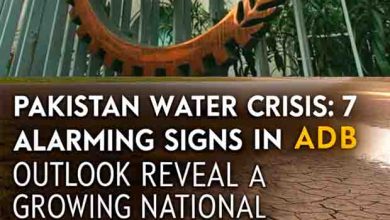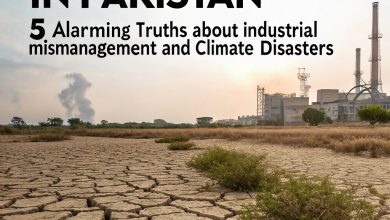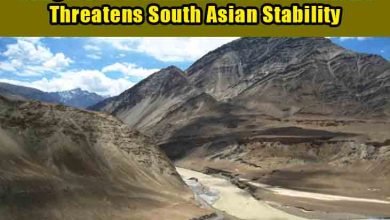Kharif Set to Begin with 43% Water Shortage: IRSA Approves April Water Availability
The Indus River System Authority (IRSA) predicts a 43% water shortage for April 2025 due to below-normal inflows in rim-station rivers. Learn more about its impact on the Kharif season.
ISLAMABAD: The Indus River System Authority (IRSA) has projected a 43% water shortage for April 2025, citing below-normal inflows into rim-station rivers. The decline in water levels follows a 31% reduction in snowfall in the Indus and Jhelum catchment areas this winter.
The IRSA Advisory Committee (IAC) convened on Wednesday to assess the water availability situation for Kharif 2025 (April 1 – September 30). Due to uncertain climate conditions, the committee approved water allocation only for April 2025, postponing decisions for the entire season until early May.
Kharif Set to Begin with 43% Water Shortage: IRSA Approves Water Availability for April
Key Highlights from the IRSA Meeting
- Projected Water Shortage: 43% for April 2025
- Winter Snowfall Deficit: 31% lower than normal levels
- Rabi 2024-25 Water Shortage: Closed at 18% against the anticipated 16%
- IRSA’s Next Meeting: Scheduled for the first week of May 2025
- PMD Forecast: Below-normal rainfall and higher temperatures expected in coming months

Water Crisis and Its Implications
Lower Snowfall and Rainfall
According to the Pakistan Meteorological Department (PMD), snowfall in the Indus and Jhelum catchment areas was 26.8 inches, significantly lower than the normal 49.7 inches. This reduction has led to less-than-normal river inflows, affecting overall water availability.
Additionally, winter rainfall was 42% below normal, with regional variations:
- Sindh: 63% less rain
- Balochistan: 53% less rain
- Punjab: 41% less rain
Impact on Agriculture and Water Storage
Lower inflows and dwindling reservoir levels threaten agricultural output and drinking water availability. The provinces, heavily dependent on Kharif crops such as cotton, sugarcane, rice, and maize, are likely to experience severe challenges in irrigation and yield.
Dams and Reservoir Levels
Pakistan’s major water reservoirs, including Tarbela and Mangla, are approaching dead levels, raising concerns over water storage for irrigation and domestic use. IRSA and WAPDA officials will continue to monitor reservoir levels to mitigate potential shortfalls.
PMD’s Climate Outlook: Rising Temperatures and Water Crisis
PMD Chief Meteorologist Muhammad Afzal warned of an unusual weather pattern leading to severe drought conditions. Rising temperatures, projected to be 3 to 5 degrees Celsius above normal, are expected to trigger heatwaves, particularly in southern Pakistan.
Possible Consequences:
- Increased crop failures due to water shortages
- Rise in waterborne diseases and health hazards
- Negative impact on wildlife and biodiversity
- Greater stress on urban water supplies
Government’s Next Steps
Water Management Strategies
To address the crisis, authorities are considering:
- Efficient Water Distribution: Equitable sharing of available water resources across provinces
- Reservoir Management: Optimizing water storage in existing dams
- Public Awareness Campaigns: Encouraging water conservation measures
- Investment in Alternative Water Sources: Promotion of rainwater harvesting and desalination plants
Future IRSA Meeting in May 2025
IRSA will reassess the water availability in early May 2025 to determine resource distribution for the entire Kharif season. This decision will be based on updated climate forecasts and real-time water inflows.
Conclusion
Pakistan’s Kharif 2025 season faces significant challenges due to 43% water shortages, low reservoir levels, and rising temperatures. IRSA’s decision to approve water availability only for April highlights the uncertainty in climate conditions and water management complexities.
The upcoming May 2025 meeting will be crucial in determining water allocations for the remaining Kharif season. Meanwhile, stakeholders must prioritize conservation efforts to mitigate the potential crisis.
Internal Links:
- Pakistan’s Water Scarcity Issues
- Impact of Climate Change on Agriculture
- Sustainable Water Management Solutions








